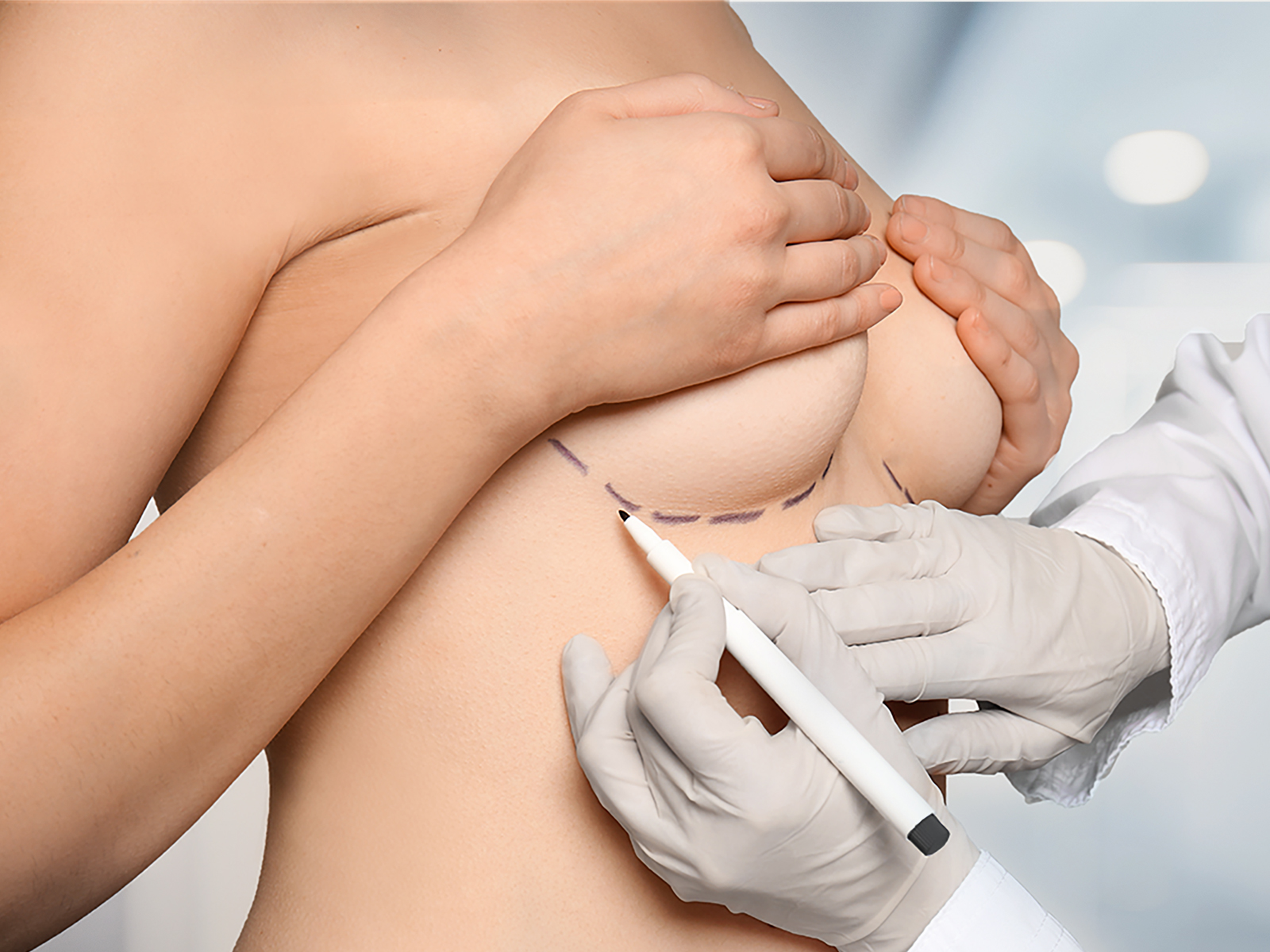
During a breast lift (mastopexy), the sagging breast, which can be caused for example by massive weight loss, past pregnancies, or the natural aging process, is tightened and lifted again. A reduction of the areola is often performed at the same time during this procedure.
Regarding breast lift surgery, there are different techniques and incision patterns, depending on the initial situation and desired results, such as the breast lift with L-incision or T-incision, the breast lift according to Lejour or the so-called periaerolar breast lift, in which an incision is only made around the areola.
A breast lift can also be performed under local anesthesia, depending on the surgical technique, but usually requires twilight sleep or general anesthesia. Afterwards, an overnight stay at the clinic is usually recommended.
The various possible incisions, surgical techniques, and anesthesia methods each have specific advantages and disadvantages, which should be discussed in detail in a personal consultation with the plastic surgeon or the operating specialist.
All the risks and consequences of possible complications after a breast lift – such as a frequently occurring wound healing disorder, but also a very rare loss of nipple sensation due to lack of blood circulation – will be explained to you during the consultation.
It should be noted that in the event of complications and/or follow-up treatments after a breast lift performed for aesthetic reasons, health insurance companies will no longer cover the full costs of the medically necessary treatments. The associated financial risk for the patient can be absorbed by taking out our safe4beauty cosmetic surgery insurance.